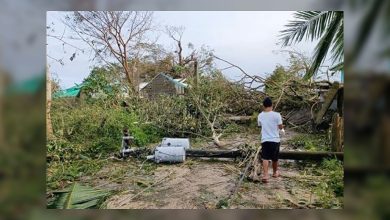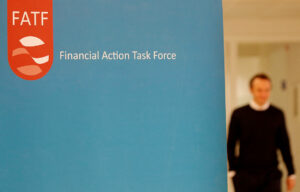Cryptocurrency adoption remains high in Philippines

CRYPTOCURRENCY ADOPTION in the Philippines remains high as young Filipinos increasingly use the digital asset on gaming and gambling platforms, DBS Bank Ltd. said.
DBS Bank in a report released on Monday said the Philippines is still in the top 10 countries in central and southern Asia and Oceania with the highest crypto adoption rates this year.
“The Philippines and Vietnam exhibit a substantial share of crypto-related web traffic directed towards gaming and gambling platforms,” the bank said.
“This trend is driven by their young and tech-savvy populations, who actively participate in play-to-earn gaming.”
DBS noted the Philippines slipped four notches to the sixth spot on a list of countries with highest cryptocurrency adoption, citing the 2023 Crypto Adoption Report of Chainalysis. The Philippines ranked second on the same list in 2022.
India topped the list, followed by Nigeria, Vietnam, the United States and Ukraine.
Swarup Gupta, industry manager of the Economist Intelligence Unit (EIU), said the rapid adoption of cryptocurrencies in play-to-earn games in the Philippines can be partly due to the lack of meaningful employment opportunities for the young and tech-savvy population.
“However, as more employment opportunities are generated, the demand for crypto transactions and settlements from play-to-earn gaming will slacken and taper off eventually,” Mr. Gupta said in an e-mail.
He said the EIU sees the country’s unemployment rate to fall by 3.2% in 2027 from 4.8% this year.
The Philippines’ unemployment rate hit a three-month low of 4.4% in August from 4.8% a month earlier and the 5.3% logged in August last year. This share was the lowest since 4.3% in May.
“In that event, cross-border remittances will remain the major driver of crypto adoption. However, the interlinking of Southeast Asia’s fast payment systems, the adoption of the Philippine identification system and the adoption of global crypto control rules mean that crypto adoption is set to slacken in the Philippines,” he added.
The heightened volatility in cryptocurrency markets has intensified debates on how to regulate the sector.
In the Philippines, the Securities and Exchange Commission (SEC) in September said that it was close to releasing a set of guidelines to regulate cryptocurrency trading to protect the investing public.
Meanwhile, DBS Bank also cited the results of the 2022 survey on central bank digital currencies (CBDC) and crypto of the Bank for International Settlements, which showed that 93% of the 86 central bank respondents globally are engaged in developing some form of virtual assets.
“Progress on retail CBDC is more advanced than on wholesale version, with a quarter of the surveyed central banks piloting the former,” the DBS Bank noted.
It also said that nine out of 10 central banks are currently working with stakeholders in designing CBDCs.
“Near 60% of surveyed central banks have reportedly stepped-up work on CBDCs to counter emergence of crypto assets,” DBS added.
The Bangko Sentral ng Pilipinas (BSP) was a part of the 2022 BIS Survey on CBDCs and crypto.
Last month, the BSP announced it has designated Hyperledger Fabric as the distributed ledger technology for Project Agila, the central bank’s wholesale CBDC pilot project.
CBDCs are issued as central bank liabilities. Since 2021, the BSP has been reviewing use cases for wholesale CBDCs, as well as the potential risks and use of CBDC payments among financial institutions.
The BSP earlier said it sees opportunities from CBDCs, such as being an additional option for monetary policy action, boosting competition and innovation among financial industry players, and improved financial inclusion. — Keisha B. Ta-asan




